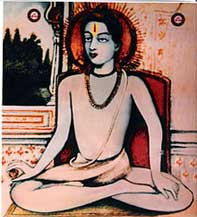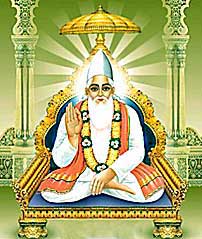In the fourteenth and fifteenth centuries, Ramananda, Kabir and Nanak remained great apostles of the Bhakti cult. They drew inspiration from old masters but showed a new path. They helped the common people to shed age-old superstitions and attain salvation through Bhakti or pure devotion. Unlike the early reformers, they were not linked with any particular religious creed and did not believe in rituals and ceremonies. They condemned polytheism and believed in one god. They also denounced all forms of idolatry. They strongly believed in Bhakti as the only means of salvation. They also emphasised the fundamental unity of all religions.
Ramananda
 |
| Ramananda |
Ramananda was born at Allahabad. He was originally a follower of Ramanuja. Later he founded his own sect and preached his principles in Hindi at Banaras and Agra. He was a worshipper of Rama. He was the first to employ the vernacular medium to propagate his ideas. Simplification of worship and emancipation of people from the traditional caste rules were his two important contributions to the Bhakti movement. He opposed the caste system and chose his disciples from all sections of society disregarding caste.
His disciples were:
a) Kabir, a Muslim weaver
b) Raidasa, a cobbler
c) Sena, a barber
d) Sadhana, a butcher
e) Dhanna, a Jat farmer
f) Naraharai, a goldsmith and
g) Pipa, a Rajput prince.
Kabir
 |
| Kabir |
Among the disciples of Ramananda the most famous was Kabir. He was born near Banaras to a brahmin widow. But he was brought up by a Muslim couple who were weavers by profession. He possessed an inquiring mind and while in Benares learnt much about Hinduism. He became familiar with Islamic teachings also and Ramananda initiated him into the higher knowledge of Hindu and Muslim religious and philosophical ideas. Kabir ’s object was to reconcile Hindus and Muslims and establish harmony between the two sects. He denounced idolatry and rituals and laid great emphasis on the equality of man before God. He emphasised the essential oneness of all religions by describing Hindus and Muslims ‘as pots of the same clay’. To him Rama and Allah, temple and mosque were the same. He regarded devotion to god as an effective means of salvation and urged that to achieve this one must have a pure heart, free from cruelty, dishonesty, hypocrisy and insincerity. He is regarded as the greatest of the mystic saints and his followers are called Kabirpanthis.

